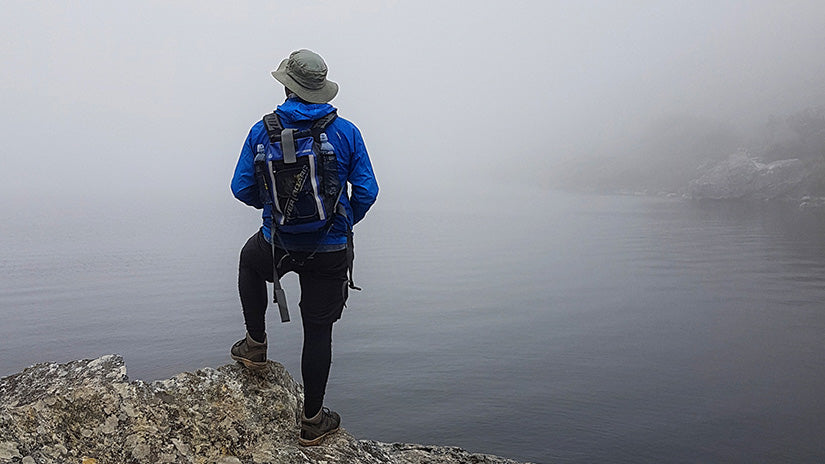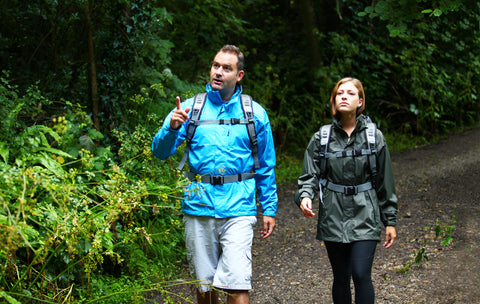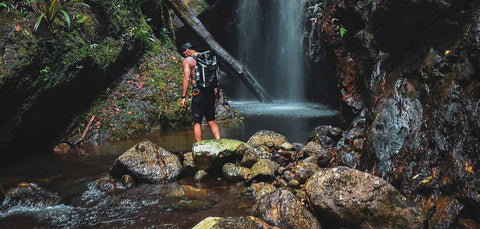-
-
-
AU
AE
CA
DE
EU
JP
NZ
RU
SG
UK
US
- SHOP ALL
- CASES
- DRY BAGS
- BACKPACKS
- DUFFELS
- COOLERS
- OB RANGES
- ACTIVITY
- ABOUT US
- WARRANTY
- SUPPORT
If you’re a lover of the great outdoors, it’s no fun when the weather forecast messes with your weekend backpacking plans. Especially when you’ve been looking forward to getting out of the city and getting some much-needed fresh country air.
We say the dampness shouldn’t have to dampen your upcoming plans - not if you follow the right tips and protocol for hiking in the rain.
You just need to learn how to deal with the wet weather.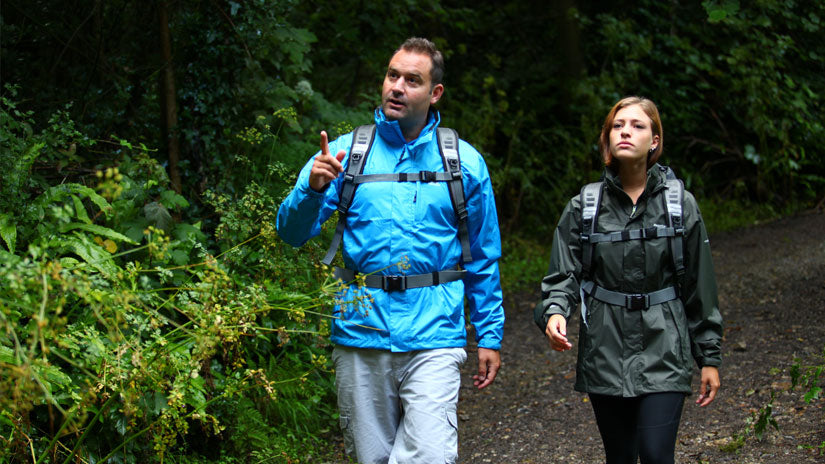
By following the necessary protocol and investing in the right hiking and camping gear, there’s no reason why you can’t have a safe and thoroughly enjoyable backpacking trip (no matter the weather).
So, if you’re all set to go hiking or camping and are determined not to let the rainy weather get in your way - read on.
Here are 23 essential tips to help you cope when backpacking in the rain:
Let’s start with the outfit planning.
When it comes to deciding what hiking in the rain gear to wear, remember the following
- layer, layer, layer.
 Your main purpose when dressing for a rainy backpacking trip should be to cover your skin entirely so that any of your wet outerwear won’t come into contact with it.
Your main purpose when dressing for a rainy backpacking trip should be to cover your skin entirely so that any of your wet outerwear won’t come into contact with it.
Go for comfy and stretchy long sleeve shirts as your base layer so you can keep your skin as dry as possible, while still being able to move around with ease.
1. Moving on to the outer layer.
It is important that you make sure your outer layer has a hard shell. A soft shell on its own won’t provide adequate protection from the wet. There are many brands that sell great rain outerwear with the technology to dry fast and prevent any wetness from seeping into your inner layers.
These may be a little more expensive than regular jackets, but trust us, if the rain is constant or torrential you’ll be thankful you made the investment.
2. For your bottom half, simply opt for pants that have vents for breathability and are easy to move around in.
3. Fabric-wise, cotton is a big no-no. Especially for those layers that are in direct contact with your skin.
It takes too long to dry and isn’t great at absorbing sweat.
The long drying time could also be detrimental to your health. Wearing wet clothing for too long leaves you vulnerable to getting a chill (or even hypothermia).
4. Think synthetic when it comes to clothing.
To retain some warmth even when it’s super wet, opt for fabrics that are made of synthetic materials, such as insulated fleece.
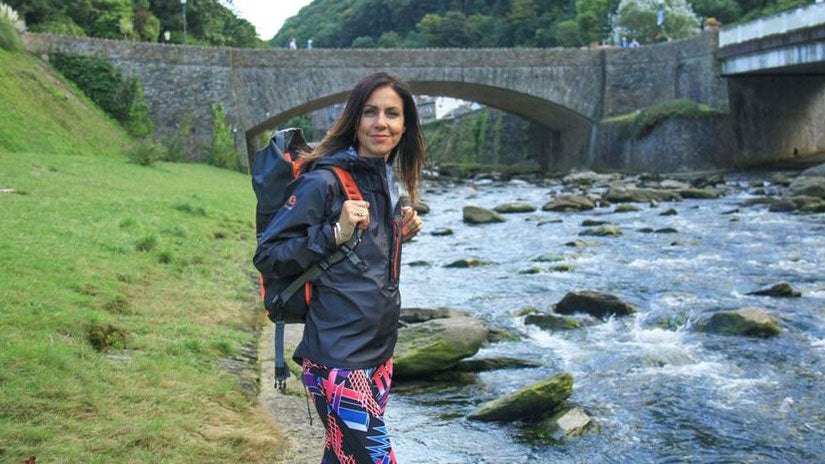
5. When you’re hiking in the rain, it goes without saying that the right footwear can pretty much make or break your trip.
Get yourself a pair of sturdy waterproof hiking boots, and some waterproof gaiters (which are easily found on Amazon).
If you layer the waterproof gaiters underneath your bottoms, they’ll seal off any potential gaps and keep that rain out.
6. While we’re on the subject of footwear, make sure you opt for shoes that have good traction (which most hiking boots are specially designed for).
The rainy weather will mean you’ll often find yourself trekking through muddy and slippery surfaces.
8. The right footwear can go a long way in preventing a stumble or a bigger accident.
9. If you’re camping in the rain, don’t just take your hiking boots.
Pack a pair of sturdy camp shoes as well, which are specially designed for handling muddy fields.
10. When you’re packing for your trip, don’t forget the extras.
A spare pair of dry pants, dry socks, and dry inner layers will offer you a lot of relief! Take a few pairs of synthetic or wool socks if you have space.
11. Wear glasses? Keep the rain off your face by investing in a rain hat.
Get one with a wide brim and you’ll be a lot more comfortable when the rain gets heavier.
12. No matter how many tips for hiking in the rain you take on board - your feet are going to get a little damp.
Your damp socks rubbing up against your skin as you walk is likely to increase the chance of blisters.
Prevent this by using the right balms and taking along plasters and wraps to apply as necessary.
On to the gear.
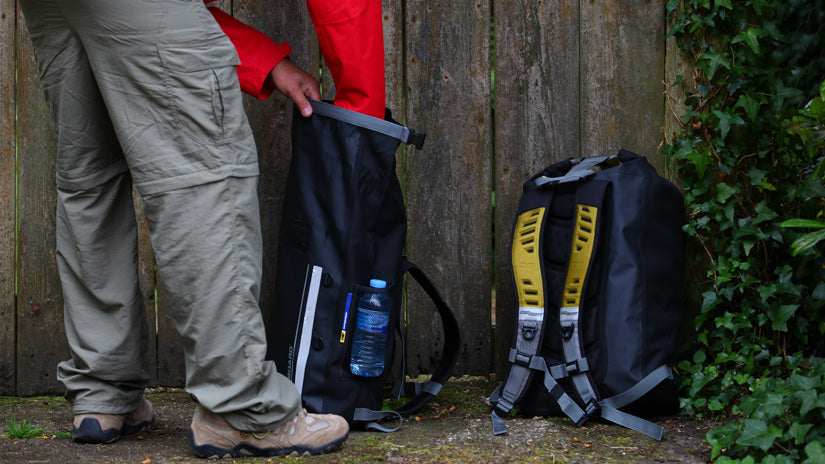 Now that you’ve covered how to keep your own body dry (or, as dry as possible!), you need to make sure your belongings are kept dry.
Now that you’ve covered how to keep your own body dry (or, as dry as possible!), you need to make sure your belongings are kept dry.
If you’re wondering how to keep your backpack dry in the rain, a waterproof bag is specially designed to keep everything inside completely dry.
You could get a pack to cover your existing bag, but that doesn’t ensure that a little wetness won’t seep into your belongings. And don’t forget, a wet bag also feels a lot heavier! Not what you need on your hike.
13. Try not to keep opening your waterproof backpack.
You leave it exposed to the wet weather conditions every time you open it, even if it’s just to grab something.
Sure, it may seem like just a little bit of wetness seeps in every time, but it can build up over time and make its way into your belongings, which can lead to mould and mildew buildup and a lack of spare dry clothes.
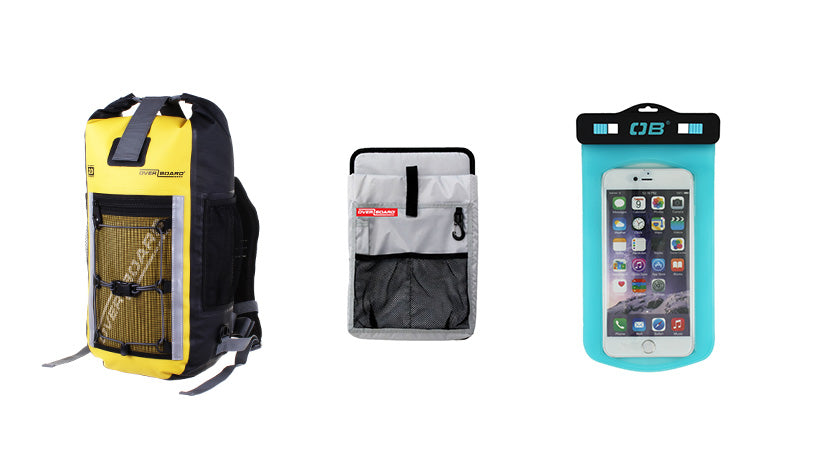 A backpack tidy and organiser is a great way to keep any wet-sensitive items extra safe for those instances when you do need to rummage through your bag in the rain.
A backpack tidy and organiser is a great way to keep any wet-sensitive items extra safe for those instances when you do need to rummage through your bag in the rain.
14. If you’re considering a longer backpacking trip which involves overnight camping and the forecast isn’t in your favour, don’t despair.
Camping in the rain is very much possible with the right tent. A tent that’s sturdy, spacious and well-ventilated is likely to fare better in wet weather conditions.
15. On that note, if any of your gear does get wet - keep it out of the tent until it’s reasonably dry!
Whether it’s your waterproof backpack or clothing that’s wet, bringing it into the tent will lead to dampness that you don’t want to deal with while you sleep.
16. Keep your sleeping clothes separate from everything else in your waterproof backpack. It’s imperative that these remain dry so you can be warm while you sleep.
Get a separate pouch for them in case a little rain gets into your bag when you open it on your hike to camp.
17. Protect your phone or camera with a waterproof case.
Unless you’re planning a digital detox, it’s likely that you’ll have your smartphone with you for photos and mapping purposes. Make sure there’s no long-term damage with a good case.
18. If you don’t already have some, invest in a set of walking poles.
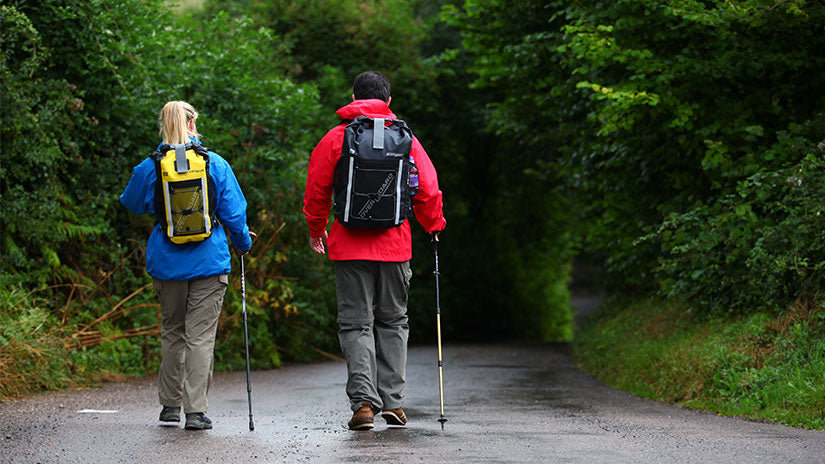 They’re easily available on Amazon and most outdoor stores and can be a huge help on a rainy hike in more difficult conditions.
They’re easily available on Amazon and most outdoor stores and can be a huge help on a rainy hike in more difficult conditions.
19. Not to scare you or anything, but it is possible for hypothermia to creep up on you when it gets cold and rainy.
Learn more about the early symptoms before you go so you know when you need to change into a dry set of clothes.
It won’t just be good for your physical health, it can help boost your mood when you’re trudging through the endless rain.
20. This one may seem obvious, but don’t forget to hydrate.
During a downpour, it can be easy to forget to consume some water. Find a protected spot under some trees to guzzle some down some water before you continue.
On that same note, don’t forget to eat. It may feel inconvenient to stop and fuel up in the middle of a rain forest, but it’s necessary to boost your energy for your remaining hike.
21. When you’re setting up your campsite, make sure that any trees over your tent don’t have any damaged limbs.
Rainy weather tends to be very gusty and a strong wind could lead to branches raining down on you.
22. Got a little sun peeking through? Grab the opportunity to lay out any of your wet things so the sun can work its magic.
If you have a utility cord, use it as a clothesline.
23. To make sure that your favourite hiking and camping gear doesn’t get ruined, dry it out thoroughly and completely when you get home.
If you fail to do this before you put it away, you run the risk of unhealthy mold and mildew.
Sure, rain is inevitable sometimes, but it shouldn’t prevent us from enjoying our glorious outdoors.
With the right mindset, the right waterproof gear, and enough preparation using the above tips for backpacking in the rain, you’re all set to enjoy your excursions, weather is damned.














